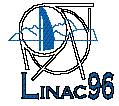Rôle of Lasers in Linear Accelerators
S. Chattopadhyay
Lawrence Berkeley National Laboratory, Berkeley, USA
Abstract
The microwave technology at frequencies between a few MHz and a few GHz has been the work horse for particle accelerators since World War I and II. Powerful radio frequency power sources -- such as cw tetrodes and pulsed klystrons, with a great deal of flexibility in amplitude, phase and frequency control -- have been the drivers of particle storage and acceleration in circular and linear accelerators. Along with such versatile power sources, came the necessity to control and manipulate particle beams via radio-frequency electromagnetic fields to a high degree of precision. The RF and beam feedback systems, bunch rotators and special purpose cavities and electromagnetic devices (e.g Schottky pickups and kickers), etc. all have been employed successfully to benefit collider and accelerator operation. As the science and technology of RF progressed, the demands on the spectral purity of RF components and sources for accelerator applications rose precipitously. Today we are contemplating going beyond the GHz microwave rf technology to mm-wave and even THz radiation sources and eventually, maybe by the state-of-the-art short pulse high powercompact lasers available today as work horses for particle accelerators. There exist possibilities of generating ultrahigh electromagnetic fields by coupling these sources and today's lasers either to a channel in free space with suitable boundaries or to a suitable macroscopic medium like a plasma. However, just as in today's microwave technology involving beam manipulation overfractions of 'mms' in time scales of 'picoseconds' at frequencies of 'GHz', one would have to learn to manipulate and control signals and particles at optical wavelengths of 'microns', in time scales of 'femtoseconds' at frequencies of 'THz' and higher in order to take advantage of today's lasers. We will give examples of laser-linac interaction already in use or being contemplated in such areas as rf photocathode gun development, high average power lasers for Compton backscattering against relativistic electrons for the TeV-scale Gamma-Gamma Colliders, laser monitoring and manipulation of beams in linacs and storage rings and finally prospects for laser acceleration of particles.
Announcements |
Committees |
Exhibition |
General |
Hotels |
Index |
Linacs |
Social |
Welcome |
sln 22 April 1996
 Conference
Conference Conference
Conference